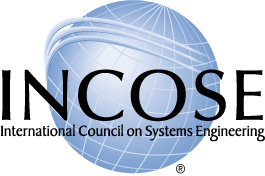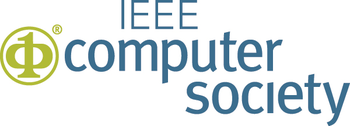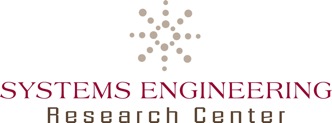Difference between revisions of "Guide to the Systems Engineering Body of Knowledge (SEBoK)"
| Line 1: | Line 1: | ||
__NOTOC__ | __NOTOC__ | ||
==Welcome to SEBoK v. 1.3== | ==Welcome to SEBoK v. 1.3== | ||
| − | On behalf of [[Acknowledgements|the more than 75 authors]], the [[ | + | On behalf of [[Acknowledgements and Release History|the more than 75 authors]] who have worked on the SEBoK over the last 5 years, the [[BKCASE Governance and Editorial Board|Editorial Board]], and the three SEBoK steward organizations – the International Council on Systems Engineering (INCOSE), the Institute of Electrical and Electronics Engineers Computer Society (IEEE-CS), and the Systems Engineering Research Center (SERC) – welcome to the ''Guide to the Systems Engineering Body of Knowledge (SEBoK)'' v. 1.3. This version was released 30 May 2014, and contains three new case studies, updates to several existing articles, and updates to references, particularly updates to the newest version of the [[A Guide to the Project Management Body of Knowledge|Project Management Body of Knowledge]]. |
| − | The SEBoK provides a compendium of the [[Primary References|key knowledge sources and references]] of systems engineering that are organized and explained to assist a wide variety of users. It is a living document, accepting | + | The SEBoK provides a compendium of the [[Primary References|key knowledge sources and references]] of systems engineering that are organized and explained to assist a wide variety of users. It is a living document, accepting community input continuously, with regular refreshes and updates. The [[Sandbox]] is a collaborative space where members of the community can provide more detailed feedback on and input to the SEBoK. |
| + | |||
| + | ==Dedication== | ||
| + | |||
| + | SEBoK v. 1.3 is dedicated in memory of ''Dr. Ricardo Pineda''. Ricardo began interacting with BKCASE as a reviewer in 2010. In 2011, he joined the BKCASE author team as an author and continued his BKCASE service as an Editor beginning in 2013. | ||
| + | |||
| + | Ricardo passed away unexpectedly on April 13, 2014. The BKCASE team will miss his exceptional expertise and professional drive, but we will miss his positive attitude, support, creativity, humor, and smile even more. | ||
==About Systems Engineering== | ==About Systems Engineering== | ||
| − | [[Systems Engineering (glossary)|Systems engineering]] is an interdisciplinary approach and means to enable the | + | [[Systems Engineering (glossary)|Systems engineering]] is an interdisciplinary approach and means to enable the full life cycle of successful systems. Separate articles in [[SEBoK Introduction|Part 1]] provide an [[Systems Engineering Overview|overview of systems engineering]], place it in [[Systems Engineering: Historic and Future Challenges|historical context]], and discuss its [[Economic Value of Systems Engineering|economic value]]. |
| − | Systems | + | Systems Engineering has it roots in the fundamentals, principle and models of systems thinking. It is applied through the application of a set of systems engineering processes within a managed lifecycle working with a number of other management, engineering and specialist disciplines. While traditionally applied to product development, sytems engneering can also be applied to service and enterprise systems. As systems engineering is a collaborative approach it relies on enabling competencies and structures at individual, team, and organizational levels. |
==About the SEBoK== | ==About the SEBoK== | ||
| Line 28: | Line 34: | ||
As a living document, at the bottom of each page, version identification can be found in a link called "[[About the SEBoK]]." | As a living document, at the bottom of each page, version identification can be found in a link called "[[About the SEBoK]]." | ||
| − | A PDF of the SEBoK v. 1.3 - as well as archive copies of versions 1.1 and 1. | + | A PDF of the SEBoK v. 1.3 - as well as archive copies of versions 1.0, 1.1, and 1.2 - may be downloaded at [[Download SEBoK PDF]]. |
There is a link in the left margin under ''Quicklinks'' explaining how to [[Cite the SEBoK]] correctly. | There is a link in the left margin under ''Quicklinks'' explaining how to [[Cite the SEBoK]] correctly. | ||
| Line 34: | Line 40: | ||
==About the Sandbox== | ==About the Sandbox== | ||
| − | When BKCASE began, the editors struggled to balance the desire for open access and constant change of a wiki with the archival integrity of a journal. To satisfy both the need for a stable baseline and the desire for broader community involvement, we have implemented a new collaborative space. The '''SEBoK Sandbox''' is a copy of the SEBoK that is separate from the baseline version where anyone in the community can edit articles, recommend new content, or provide comments on existing articles. It is important to note that while anyone in the community can gain access to the Sandbox, all submissions must still be approved by the Editorial Board before they will be folded into a new baseline version of the SEBoK. For more information on how this works, please '''[http://www.sebokwiki.org/sandbox visit the Sandbox]'''. (Note: Please recognize that the Sandbox associated with v. 1. | + | When BKCASE began, the editors struggled to balance the desire for open access and constant change of a wiki with the archival integrity of a journal. To satisfy both the need for a stable baseline and the desire for broader community involvement, we have implemented a new collaborative space. The '''SEBoK Sandbox''' is a copy of the SEBoK that is separate from the baseline version where anyone in the community can edit articles, recommend new content, or provide comments on existing articles. It is important to note that while anyone in the community can gain access to the Sandbox, all submissions must still be approved by the Editorial Board before they will be folded into a new baseline version of the SEBoK. For more information on how this works, please '''[http://www.sebokwiki.org/sandbox visit the Sandbox]'''. (Note: Please recognize that the Sandbox associated with v. 1.3 will open in June 2013, allowing the community to propose changes for v. 1.4, which is expected to be released in fall 2014.) |
You may also still contribute to the SEBoK by using the comments feature on the bottom of each page. | You may also still contribute to the SEBoK by using the comments feature on the bottom of each page. | ||
==Using the SEBoK== | ==Using the SEBoK== | ||
| − | Articles in the SEBoK can be found by using the ''Search'' field in the upper right corner of each page, as well as through the ''Quicklinks'', ''Outline'', and ''Navigation'' menus in the left margin of each page. | + | Articles in the SEBoK can be found by using the ''Search'' field in the upper right corner of each page, as well as through the ''Quicklinks'', ''Outline'', and ''Navigation'' menus in the left margin of each page. Detailed instructions about the page layout and features are found in [[How to Read the SEBoK]]. |
| − | |||
| − | Detailed instructions about the page layout and features are found in [[How to Read the SEBoK]]. | ||
==Contact the Editors== | ==Contact the Editors== | ||
| − | Comments can be left on any page by using the [http://help.disqus.com/ DISQUS] feature. These are periodically reviewed. Comments can be flagged in DISQUS, which will result in a faster review by the editors. | + | Comments can be left on any page by using the [http://help.disqus.com/ DISQUS] feature. These are periodically reviewed. Comments can be flagged in DISQUS, which will result in a faster review by the editors. You may also review the current [[BKCASE Governance and Editorial Board|Editorial Board]] and contact editors directly about the materials in their areas of responsibility. |
| − | Email may be sent to [mailto:bkcase@ | + | Email may be sent to [mailto:bkcase.incose.ieeecs@gmail.com bkcase.incose.ieeecs@gmail.com]. |
---- | ---- | ||
Revision as of 19:02, 27 May 2014
Welcome to SEBoK v. 1.3
On behalf of the more than 75 authors who have worked on the SEBoK over the last 5 years, the Editorial Board, and the three SEBoK steward organizations – the International Council on Systems Engineering (INCOSE), the Institute of Electrical and Electronics Engineers Computer Society (IEEE-CS), and the Systems Engineering Research Center (SERC) – welcome to the Guide to the Systems Engineering Body of Knowledge (SEBoK) v. 1.3. This version was released 30 May 2014, and contains three new case studies, updates to several existing articles, and updates to references, particularly updates to the newest version of the Project Management Body of Knowledge.
The SEBoK provides a compendium of the key knowledge sources and references of systems engineering that are organized and explained to assist a wide variety of users. It is a living document, accepting community input continuously, with regular refreshes and updates. The Sandbox is a collaborative space where members of the community can provide more detailed feedback on and input to the SEBoK.
Dedication
SEBoK v. 1.3 is dedicated in memory of Dr. Ricardo Pineda. Ricardo began interacting with BKCASE as a reviewer in 2010. In 2011, he joined the BKCASE author team as an author and continued his BKCASE service as an Editor beginning in 2013.
Ricardo passed away unexpectedly on April 13, 2014. The BKCASE team will miss his exceptional expertise and professional drive, but we will miss his positive attitude, support, creativity, humor, and smile even more.
About Systems Engineering
Systems engineering is an interdisciplinary approach and means to enable the full life cycle of successful systems. Separate articles in Part 1 provide an overview of systems engineering, place it in historical context, and discuss its economic value.
Systems Engineering has it roots in the fundamentals, principle and models of systems thinking. It is applied through the application of a set of systems engineering processes within a managed lifecycle working with a number of other management, engineering and specialist disciplines. While traditionally applied to product development, sytems engneering can also be applied to service and enterprise systems. As systems engineering is a collaborative approach it relies on enabling competencies and structures at individual, team, and organizational levels.
About the SEBoK
The SEBoK is organized into 7 parts, with a Glossary of Terms and a list of Primary References.
- Part 1 discusses the SEBoK's scope and structure, including its hierarchy of parts, knowledge areas, and topics. Part 1 also includes a lengthy discussion of SEBoK Users and Uses, including five use cases.
The other parts include:
- Part 2 Systems
- Part 3 Systems Engineering and Management
- Part 4 Applications of Systems Engineering
- Part 5 Enabling Systems Engineering
- Part 6 Related Disciplines
- Part 7 Systems Engineering Implementation Examples
As the SEBoK is a compendium, much of the content has restricted intellectual property rights. This copyright information is placed on each page, and must be respected. The SEBoK copyright is held by the Trustees of the Stevens Institute of Technology, and plans for the transfer of the copyright are discussed in the Editors' Note.
As a living document, at the bottom of each page, version identification can be found in a link called "About the SEBoK."
A PDF of the SEBoK v. 1.3 - as well as archive copies of versions 1.0, 1.1, and 1.2 - may be downloaded at Download SEBoK PDF.
There is a link in the left margin under Quicklinks explaining how to Cite the SEBoK correctly.
About the Sandbox
When BKCASE began, the editors struggled to balance the desire for open access and constant change of a wiki with the archival integrity of a journal. To satisfy both the need for a stable baseline and the desire for broader community involvement, we have implemented a new collaborative space. The SEBoK Sandbox is a copy of the SEBoK that is separate from the baseline version where anyone in the community can edit articles, recommend new content, or provide comments on existing articles. It is important to note that while anyone in the community can gain access to the Sandbox, all submissions must still be approved by the Editorial Board before they will be folded into a new baseline version of the SEBoK. For more information on how this works, please visit the Sandbox. (Note: Please recognize that the Sandbox associated with v. 1.3 will open in June 2013, allowing the community to propose changes for v. 1.4, which is expected to be released in fall 2014.)
You may also still contribute to the SEBoK by using the comments feature on the bottom of each page.
Using the SEBoK
Articles in the SEBoK can be found by using the Search field in the upper right corner of each page, as well as through the Quicklinks, Outline, and Navigation menus in the left margin of each page. Detailed instructions about the page layout and features are found in How to Read the SEBoK.
Contact the Editors
Comments can be left on any page by using the DISQUS feature. These are periodically reviewed. Comments can be flagged in DISQUS, which will result in a faster review by the editors. You may also review the current Editorial Board and contact editors directly about the materials in their areas of responsibility.
Email may be sent to bkcase.incose.ieeecs@gmail.com.

|
|
SEBoK Discussion
Please provide your comments and feedback on the SEBoK below. You will need to log in to DISQUS using an existing account (e.g. Yahoo, Google, Facebook, Twitter, etc.) or create a DISQUS account. Simply type your comment in the text field below and DISQUS will guide you through the login or registration steps. Feedback will be archived and used for future updates to the SEBoK. If you provided a comment that is no longer listed, that comment has been adjudicated. You can view adjudication for comments submitted prior to SEBoK v. 1.0 at SEBoK Review and Adjudication. Later comments are addressed and changes are summarized in the Letter from the Editor and Acknowledgements and Release History.
If you would like to provide edits on this article, recommend new content, or make comments on the SEBoK as a whole, please see the SEBoK Sandbox.
blog comments powered by Disqus
